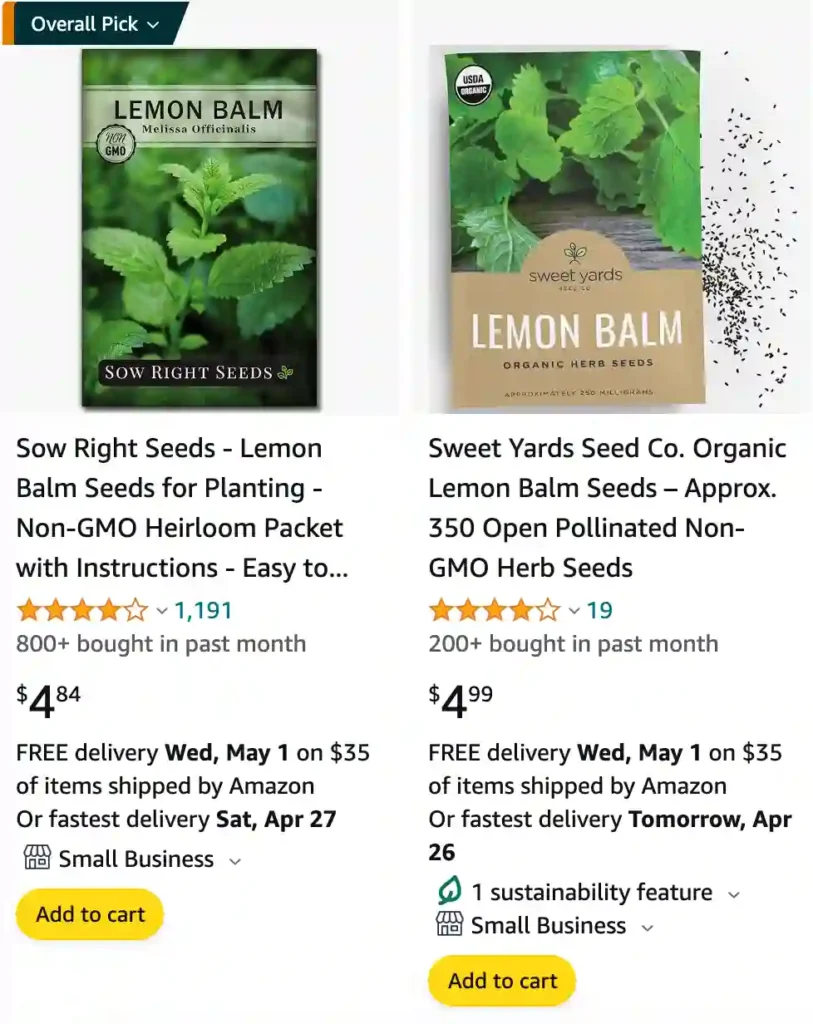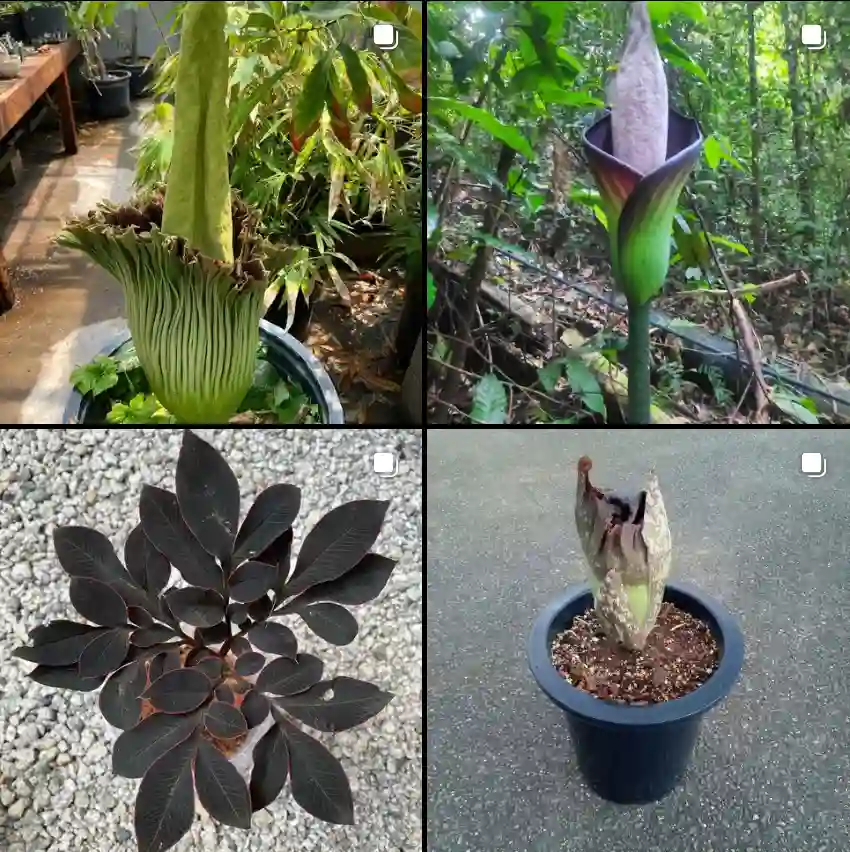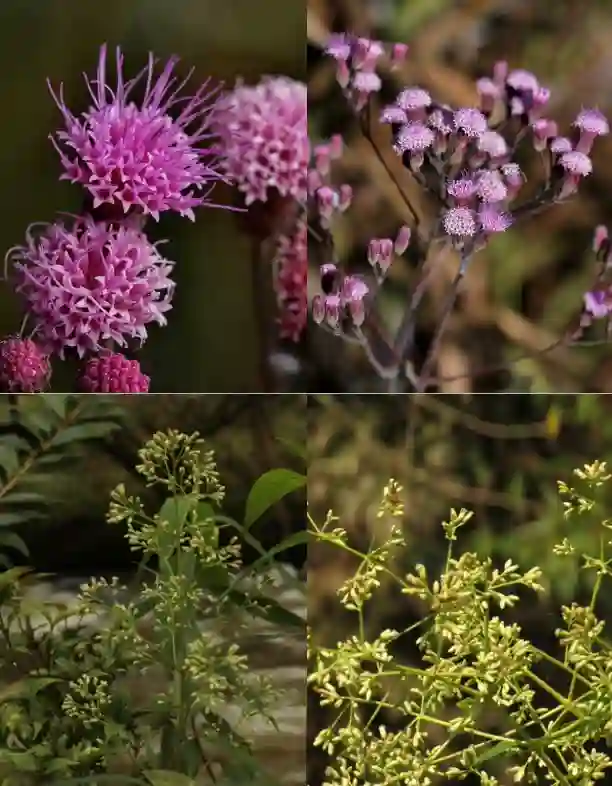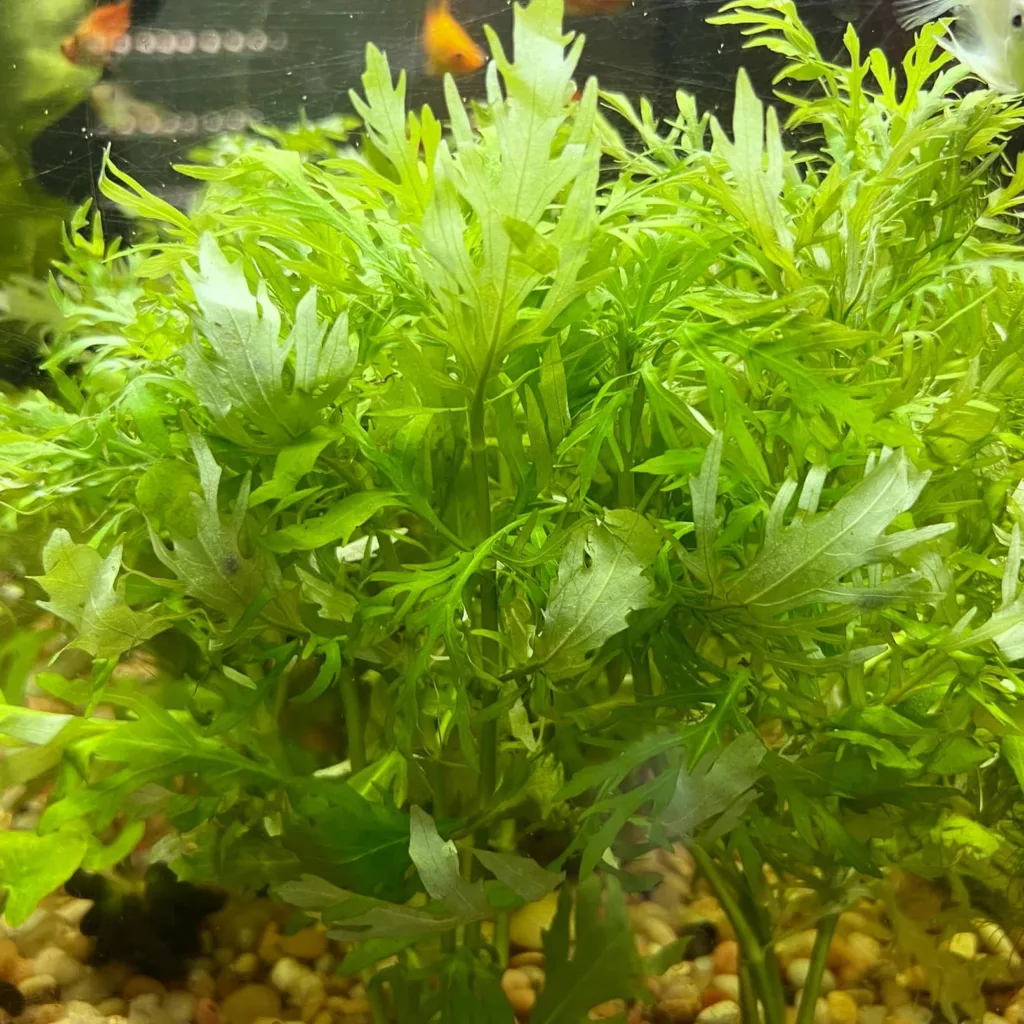
Lemon Balm (Melissa Officinalis): A Personal Exploration
When I first encountered lemon balm (Melissa officinalis), I was struck by its unassuming charm. A perennial herb with softly serrated, heart-shaped leaves and a fragrance that marries citrusy brightness with herbal warmth, it drew me in immediately. This versatile plant has since become a mainstay in my garden and daily life, offering a blend of aesthetic beauty, culinary uses, and therapeutic benefits that are hard to match.
4 Species in Genus Melissa
FAQs
Why I Grow Lemon Balm?
I started growing lemon balm out of curiosity. Its reputation as a “cure-all” herb intrigued me. With its historical roots in traditional medicine and its association with relaxation, improved mood, and better digestion, I felt it deserved a place in my garden. I was also drawn to its adaptability—it thrives in sunny or partially shaded areas, and it isn’t fussy about soil type, as long as it drains well.
I planted it near my kitchen window, where its vibrant green leaves add life to the space. Over time, I’ve come to appreciate its subtle beauty. Lemon balm grows in compact mounds and produces delicate white or pale yellow flowers that attract pollinators like bees. It’s low-maintenance, needing just occasional watering during dry spells and a trim to keep it from spreading excessively.
How to make lemon balm tea?
To make lemon balm tea, I usually start by harvesting fresh lemon balm leaves from my garden. I like to pick the leaves in the morning when their essential oils are the strongest. Then, I rinse the leaves gently to remove any dirt or debris. Next, I boil water in a kettle and pour it over a handful of lemon balm leaves in a teapot or mug. I let the leaves steep for about 5-10 minutes, depending on how strong I want the flavor. Sometimes I like to add a slice of lemon or a bit of honey for extra sweetness. The result is a soothing and refreshing tea that always helps me unwind after a long day.
Is lemon balm safe for dogs?
Lemon balm can be safe for dogs in small amounts, but it’s important to use caution. While some dogs may enjoy the taste and aroma of lemon balm, others may not react well to it. Personally, I’ve found that introducing very small amounts of lemon balm into my dog’s diet hasn’t caused any issues, but I always monitor her closely for any signs of discomfort or adverse reactions. It’s crucial to consult with a veterinarian before giving your dog any new herbs or plants, as they can provide guidance based on your dog’s specific health needs and potential allergies. Overall, while lemon balm can have calming effects for humans, it’s best to err on the side of caution when it comes to giving it to our furry friends.
Can you smoke lemon balm?
While some people do smoke lemon balm for its potential calming effects, I personally wouldn’t recommend it. I’ve heard of individuals using it as a tobacco substitute or blending it with other herbs for a more aromatic smoking experience. However, as someone who values my respiratory health, I prefer not to inhale smoke from any substance, including lemon balm. Additionally, smoking any herb can carry risks, including irritation to the lungs and throat. Instead, I prefer to enjoy lemon balm in more traditional ways, such as brewing it into a tea or using it as a culinary herb in cooking.
How to dry lemon balm?
Drying lemon balm is a simple process that I’ve found quite rewarding. First, I harvest fresh lemon balm from my garden, usually in the morning when the oils are most potent. Then, I gently rinse the leaves to remove any dirt or debris and pat them dry with a clean towel. Next, I tie small bunches of lemon balm together with twine or string and hang them upside down in a warm, dry location with good airflow. I’ve found that a well-ventilated room works best for this. It usually takes about 1-2 weeks for the lemon balm to dry completely. Once the leaves are crisp and brittle to the touch, I remove them from the stems and store them in an airtight container away from direct sunlight. Dried lemon balm is perfect for making tea, adding to culinary dishes, or creating homemade potpourri.
Is lemon balm safe for cats?
Lemon balm is generally considered safe for cats, but like with any herb or plant, it’s essential to use caution and monitor your cat for any adverse reactions. Personally, I’ve observed that my cats sometimes show interest in lemon balm, particularly when it’s growing in the garden. While they may nibble on it occasionally, I ensure they don’t consume large quantities. It’s important to note that every cat is different, and some may have sensitivities or allergies to certain herbs. If you’re considering introducing lemon balm to your cat, I recommend starting with a small amount and observing their reaction closely. If you notice any signs of gastrointestinal upset or unusual behavior, it’s best to discontinue use and consult with a veterinarian. Overall, while lemon balm is generally considered safe for cats in moderation, it’s essential to prioritize your pet’s well-being and consult with a professional if you have any concerns.
Where to buy lemon balm?
You can buy lemon balm from various places, depending on your preference and convenience. Personally, I’ve found that local nurseries or garden centers often carry lemon balm plants, which you can then grow in your own garden or in pots indoors. This is a great option if you prefer fresh lemon balm and want to have a steady supply on hand. Additionally, many health food stores and specialty grocery stores sell dried lemon balm leaves in the tea or herb section. These dried leaves are perfect for making tea or adding to recipes. If you prefer shopping online, there are numerous websites and online retailers that offer both fresh lemon balm plants and dried leaves for purchase. Whether you choose to buy fresh or dried lemon balm, it’s essential to source it from reputable sellers to ensure its quality and freshness.
Can chickens eat lemon balm?
Yes, chickens can eat lemon balm, and it can actually provide them with some health benefits. Personally, I’ve noticed that my chickens enjoy pecking at lemon balm leaves when I scatter them in their coop or run. Lemon balm is safe for chickens to consume in moderation, and it can even act as a natural insect repellent, helping to keep pests away from the coop. Additionally, some chicken owners believe that lemon balm may have calming properties, which could be beneficial for reducing stress in their flock. However, it’s important not to overfeed lemon balm or any other herbs to chickens, as too much of a good thing can upset their digestive systems. As with introducing any new food to chickens, it’s a good idea to start with small amounts and monitor their reaction closely. Overall, incorporating lemon balm into your chickens’ diet can be a tasty and potentially beneficial addition to their nutrition.
How to make lemon balm oil?
Making lemon balm oil is a straightforward process that I’ve found quite rewarding. First, I harvest fresh lemon balm leaves from my garden, usually in the morning when the oils are most potent. Then, I thoroughly wash the leaves and pat them dry with a clean towel to remove any dirt or debris. Next, I finely chop the leaves to increase their surface area and place them in a clean, dry glass jar. I cover the chopped leaves with a carrier oil of my choice, such as olive oil or almond oil, ensuring that they are fully submerged. After sealing the jar tightly, I place it in a warm, sunny spot for about 1-2 weeks, shaking it gently every day to encourage infusion. Once the oil has taken on the aromatic flavor of the lemon balm, I strain out the leaves using a fine mesh strainer or cheesecloth and transfer the infused oil into a clean, airtight container for storage. This homemade lemon balm oil is perfect for use in aromatherapy, massage, or as a natural skincare ingredient, adding a delightful lemony fragrance and potential calming properties.
How to make lemon balm tincture?
Making a lemon balm tincture is a simple process that I’ve found quite rewarding. First, I harvest fresh lemon balm leaves from my garden, usually in the morning when their oils are most potent. Then, I thoroughly wash the leaves and pat them dry to remove any dirt or debris. Next, I finely chop the leaves and place them in a clean, dry glass jar. I cover the chopped leaves with a high-proof alcohol like vodka or brandy, ensuring that they are fully submerged. After sealing the jar tightly, I store it in a cool, dark place for about 4-6 weeks, shaking it gently every day to encourage extraction. Once the tincture has taken on the aromatic flavor and color of the lemon balm, I strain out the leaves using a fine mesh strainer or cheesecloth and transfer the liquid into a clean, dark glass dropper bottle for storage. This homemade lemon balm tincture can be used as a natural remedy for anxiety, insomnia, or digestive issues, with just a few drops added to water or tea as needed.
Can dogs have lemon balm?
While lemon balm is generally considered safe for dogs in small amounts, it’s essential to use caution and monitor your dog for any adverse reactions. Personally, I’ve found that introducing very small amounts of lemon balm into my dog’s diet hasn’t caused any issues, but every dog is different, and some may have sensitivities or allergies to certain herbs. Before giving your dog lemon balm, I recommend consulting with a veterinarian, especially if your dog has any existing health conditions or is taking medications. Additionally, it’s important to avoid giving your dog large quantities of lemon balm or any other herbs, as excessive consumption can lead to gastrointestinal upset. Overall, while lemon balm can have potential calming effects for dogs, it’s best to introduce it gradually and prioritize your pet’s well-being.
What does lemon balm taste like?
Lemon balm has a refreshing and citrusy flavor with hints of lemon and mint. Personally, I find that it has a delicate and slightly sweet taste, reminiscent of lemon but more subtle. When I chew on fresh lemon balm leaves, I notice a pleasant combination of tanginess and herbal freshness, similar to lemon zest but with a softer, milder profile. It’s not as intense as biting into a lemon; instead, it offers a gentle citrusy essence that is uplifting and soothing. Overall, the taste of lemon balm is bright, aromatic, and wonderfully refreshing, making it a delightful addition to teas, culinary dishes, and herbal remedies.
Can rabbits eat lemon balm?
Yes, rabbits can eat lemon balm, and it can actually be a healthy and enjoyable addition to their diet. Personally, I’ve observed that my rabbits enjoy nibbling on fresh lemon balm leaves when I offer them as a treat. Lemon balm is safe for rabbits to consume in moderation, and it can provide them with some nutritional benefits. However, it’s essential to introduce new foods gradually and monitor your rabbits for any adverse reactions. While lemon balm is generally well-tolerated by rabbits, some individuals may have sensitivities or allergies to certain herbs. As with any treat, it’s best to offer lemon balm in small amounts and as part of a balanced diet that includes plenty of hay, fresh vegetables, and a limited amount of pellets. Overall, incorporating lemon balm into your rabbits’ diet can be a tasty and enriching experience for them.
Does lemon balm tea have caffeine?
No, lemon balm tea typically does not contain caffeine. Lemon balm is an herbal tea made from the leaves of the lemon balm plant, which does not naturally contain caffeine. As a result, lemon balm tea is caffeine-free and can be enjoyed at any time of the day without concerns about disrupting sleep or causing caffeine-related side effects. Personally, I find that drinking a warm cup of lemon balm tea is a soothing and calming experience, perfect for relaxing and unwinding before bedtime. Whether enjoyed hot or cold, lemon balm tea offers a refreshing and aromatic flavor without the stimulating effects of caffeine.
How to dehydrate lemon balm?
Dehydrating lemon balm is a simple process that preserves its flavor and aroma for future use. First, I harvest fresh lemon balm leaves from my garden, usually in the morning when their essential oils are most potent. Then, I gently rinse the leaves under cold water to remove any dirt or debris and pat them dry with a clean towel. Next, I spread the lemon balm leaves out in a single layer on a dehydrator tray or a baking sheet lined with parchment paper. I set my dehydrator to the lowest temperature setting, typically around 95°F to 110°F (35°C to 45°C), or preheat my oven to the lowest temperature possible. I then place the tray of lemon balm leaves in the dehydrator or oven and let them dry for several hours, checking periodically until they are crisp and brittle to the touch. Once dried, I remove the lemon balm leaves from the tray and store them in an airtight container away from direct sunlight. Dried lemon balm can be used to make tea, infused oils, or as a flavorful addition to culinary dishes, providing a taste of summer all year round.
How to make lemon balm salve?
Making lemon balm salve is a rewarding process that harnesses the soothing properties of this herb. To start, I gather fresh lemon balm leaves from my garden, choosing ones that are vibrant and healthy. After washing and drying the leaves, I finely chop them to release their aromatic oils. Next, I create an infused oil by combining the chopped lemon balm leaves with a carrier oil like olive oil or coconut oil in a clean, dry glass jar. I place the jar in a sunny spot for several weeks, shaking it gently every day to encourage infusion. Once the oil has absorbed the lemon balm’s essence, I strain out the leaves using a fine mesh strainer or cheesecloth. Then, I melt beeswax in a double boiler and add the infused oil, stirring until well combined. Finally, I pour the mixture into small, sterilized containers and let it cool and solidify. The resulting lemon balm salve is perfect for soothing minor cuts, scrapes, and insect bites, offering a natural remedy with a delightful lemony scent.
Culinary Adventures with Lemon Balm
One of the most delightful discoveries about lemon balm is its versatility in the kitchen. The leaves have a gentle lemony flavor, making them an excellent addition to both sweet and savory dishes.
I often brew fresh lemon balm tea. A handful of leaves steeped in hot water releases a soothing aroma and a light citrus flavor. On warm days, I let the tea cool and serve it iced, often adding a slice of lemon or a sprig of mint for extra refreshment.
In cooking, I’ve used chopped lemon balm to elevate salads, soups, and marinades. It pairs beautifully with fish and poultry, adding a subtle citrusy zing. One of my favorite desserts is a simple lemon balm-infused syrup drizzled over fresh fruit or pancakes. The herb’s mild flavor doesn’t overpower—it enhances.
Therapeutic Benefits: A Herb for Mind and Body
Lemon balm has earned its place in my home not just for its flavor but also for its calming effects. After a stressful day, I find its tea incredibly grounding. Studies back this up, showing that lemon balm may help reduce anxiety and promote sleep.
Beyond its relaxing properties, I’ve found it to be a natural remedy for minor ailments. A crushed leaf applied to bug bites provides quick relief, and its antiviral properties make it a helpful addition to homemade balms for cold sores.
Lemon balm also supports digestion. After heavy meals, I brew a cup of tea to ease bloating and indigestion. Knowing that it’s gentle enough for everyday use gives me peace of mind.
Sustainable and Practical
One of the best things about growing lemon balm is its sustainability. The plant is prolific, and a single clump can supply me with fresh leaves throughout the growing season. I dry the excess leaves to ensure I have a year-round supply. Stored in an airtight container, dried lemon balm retains its flavor and potency for months.
Its vigorous growth also makes it a great companion plant. It deters pests like mosquitoes and attracts beneficial insects, contributing to a balanced ecosystem in my garden.
A Personal Reflection
What I love most about lemon balm is its accessibility. Whether you’re an experienced gardener or a beginner, this herb rewards you with minimal effort. It bridges the gap between utility and beauty, enhancing both my garden and my well-being.
Over the years, I’ve developed a deep appreciation for this humble herb. It has become more than just a plant—it’s a reminder of the simple joys that nature provides. From its refreshing aroma to its calming effects, lemon balm has enriched my life in countless ways.
If you’re looking to add a versatile, easy-to-grow herb to your garden or kitchen, I wholeheartedly recommend giving lemon balm a try. For me, it’s more than just a plant; it’s a trusted companion in my journey toward a more natural and mindful lifestyle.
If i die, water my plants!



